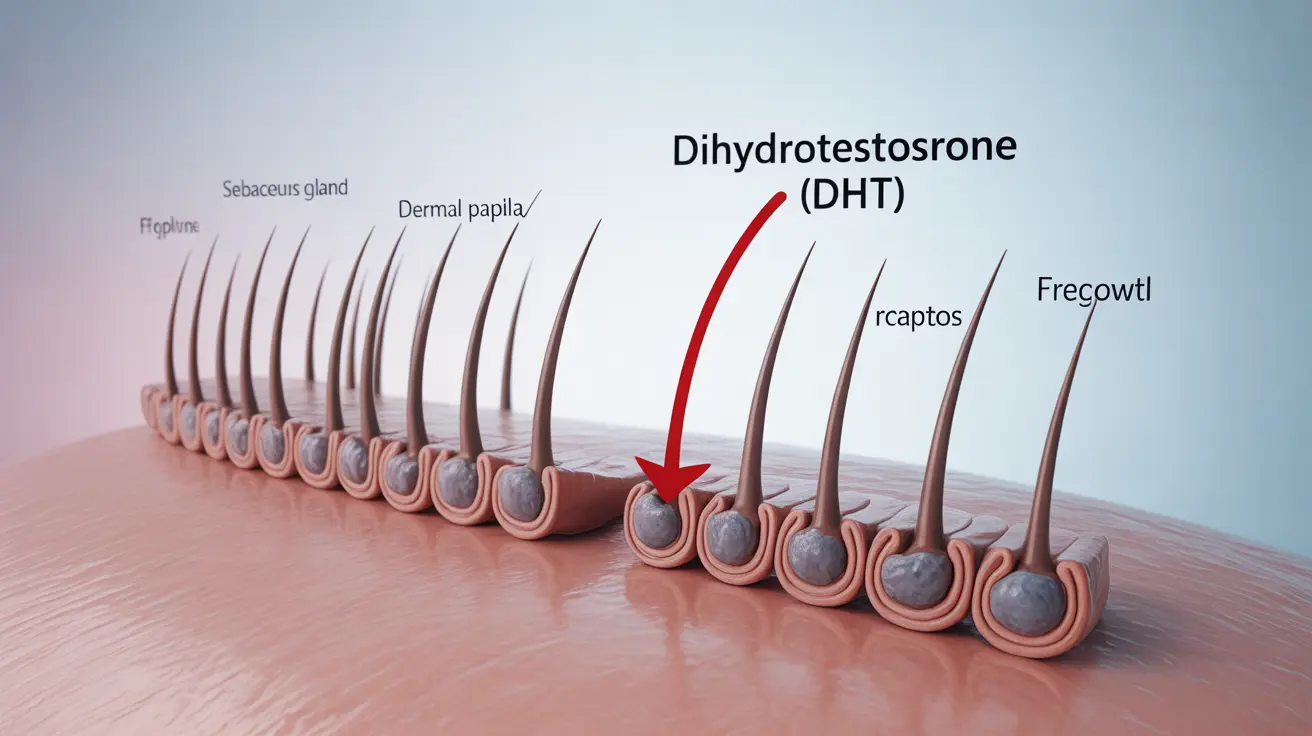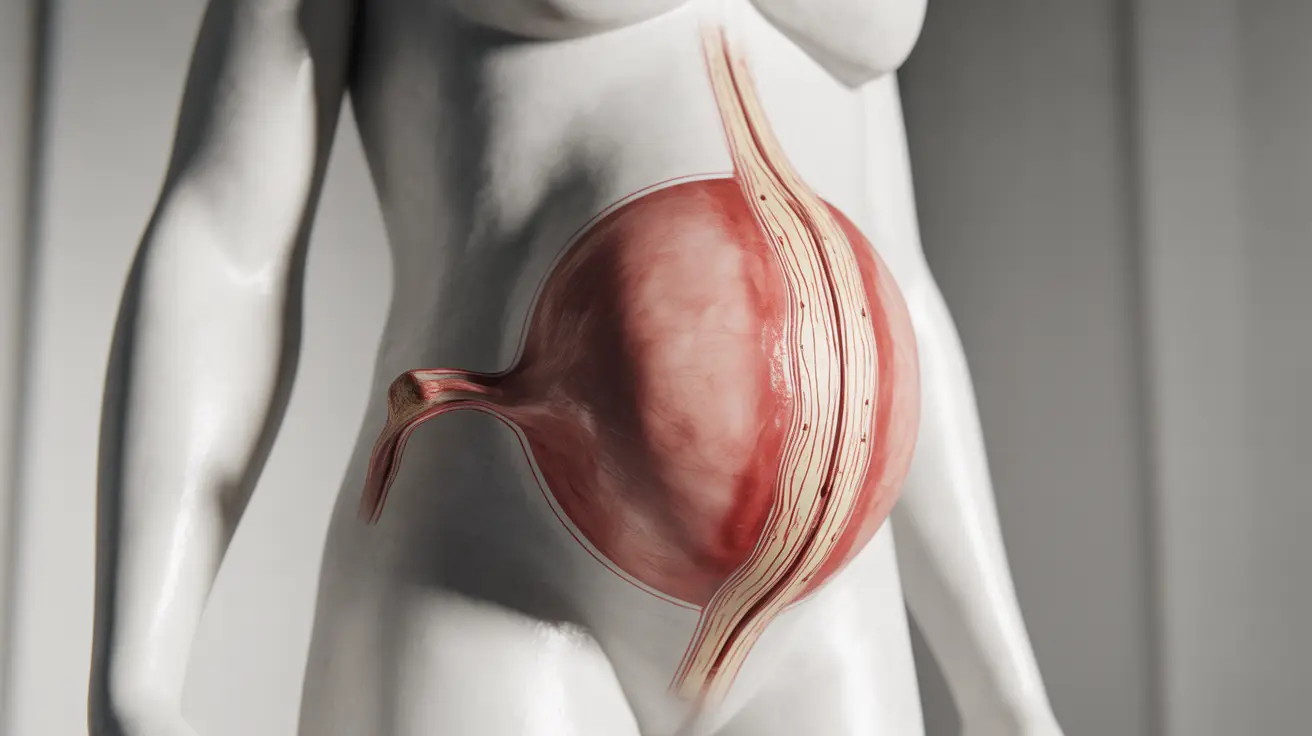Balding affects millions of people worldwide, with approximately 85% of men experiencing significant hair loss by age 50 and nearly 40% of women facing noticeable hair thinning by the same age. This common condition can significantly impact self-confidence and quality of life, making it essential to understand the underlying causes and available treatment options.
Whether you're noticing the first signs of hair loss or seeking effective treatment strategies, gaining knowledge about balding can help you make informed decisions about your hair health and explore appropriate interventions to slow or potentially reverse the process.
The Science Behind Balding
Balding, medically known as androgenetic alopecia, occurs when hair follicles gradually shrink due to genetic predisposition and hormonal influences. The primary culprit is dihydrotestosterone (DHT), a hormone derived from testosterone that binds to hair follicles and causes them to weaken over time.
This process doesn't happen overnight. Hair follicles undergo a gradual miniaturization process where they produce progressively thinner and shorter hairs before eventually stopping hair production altogether. The affected follicles remain present but become dormant, which is why some hair restoration treatments can still be effective even after hair loss has occurred.
Common Causes of Hair Loss
While genetics play the most significant role in balding, several factors can contribute to or accelerate hair loss. Hormonal changes, particularly fluctuations in testosterone, estrogen, and thyroid hormones, can trigger or worsen hair thinning. Women may experience increased hair loss during menopause, pregnancy, or while using certain hormonal contraceptives.
Medical conditions such as alopecia areata, scalp infections, and autoimmune disorders can also cause hair loss. Additionally, certain medications including blood thinners, antidepressants, and chemotherapy drugs are known to contribute to hair loss as a side effect.
Lifestyle factors shouldn't be overlooked either. Chronic stress, poor nutrition, excessive hairstyling, and tight hairstyles that pull on the hair can lead to temporary or permanent hair loss in some individuals.
Recognizing Early Warning Signs
Male pattern baldness typically begins with a receding hairline at the temples, creating the characteristic "M" shape. This may be accompanied by thinning at the crown of the head, which gradually expands into a larger bald spot. Over time, these areas may connect, leaving hair only on the sides and back of the head.
Female pattern baldness presents differently, usually manifesting as overall thinning across the top of the head rather than distinct bald patches. Women may notice their part line widening or their ponytail becoming noticeably thinner. The hairline typically remains intact, but the scalp may become more visible through the hair.
Other early signs include finding excessive hair on pillows, in shower drains, or on hairbrushes. If you're shedding more than 100 hairs per day consistently, it may indicate the beginning stages of pattern baldness or another form of hair loss.
Current Treatment Approaches
Modern medicine offers several evidence-based treatments for balding, with varying degrees of effectiveness depending on the individual and the stage of hair loss. The key to successful treatment is early intervention, as it's generally easier to maintain existing hair than to regrow hair that has already been lost.
Topical treatments like minoxidil work by improving blood flow to hair follicles and extending the growth phase of the hair cycle. This over-the-counter medication is available in different strengths and formulations for both men and women.
Oral medications, particularly finasteride for men, work by blocking the conversion of testosterone to DHT, thereby reducing the hormonal trigger for hair loss. These prescription medications require ongoing use to maintain benefits and may have side effects that should be discussed with a healthcare provider.
Advanced Treatment Options
For those seeking more dramatic results, hair transplant procedures have become increasingly sophisticated and natural-looking. Modern techniques like Follicular Unit Extraction (FUE) and Follicular Unit Transplantation (FUT) can provide permanent solutions by relocating healthy hair follicles from donor areas to balding regions.
Newer treatments include platelet-rich plasma (PRP) therapy, which uses concentrated platelets from the patient's own blood to stimulate hair growth, and low-level laser therapy, which may help improve hair density and thickness.
Scalp micropigmentation offers a non-surgical alternative that creates the appearance of hair follicles through specialized tattooing techniques, providing the illusion of a fuller head of hair or a closely-shaved appearance.
Prevention and Lifestyle Modifications
While genetic balding cannot be completely prevented, certain lifestyle modifications may help slow its progression. Maintaining a balanced diet rich in protein, iron, and vitamins supports healthy hair growth. Regular scalp massage may improve circulation, and gentle hair care practices can prevent unnecessary hair damage.
Managing stress through exercise, meditation, or other relaxation techniques may help reduce stress-related hair loss. Avoiding harsh chemical treatments, excessive heat styling, and tight hairstyles can also preserve existing hair and prevent additional damage.
When to Seek Professional Help
Consulting with a dermatologist or trichologist becomes important when hair loss is sudden, patchy, or accompanied by other symptoms like scalp irritation or pain. These professionals can perform tests to determine the exact cause of hair loss and recommend appropriate treatments.
Early consultation is particularly valuable because many treatments are most effective when started in the early stages of hair loss. A healthcare provider can also rule out underlying medical conditions that might be contributing to hair loss and ensure that chosen treatments are safe and appropriate for your specific situation.
Frequently Asked Questions
What are the most common causes of balding in men and women?
The most common cause of balding in both men and women is androgenetic alopecia, or pattern baldness, which is caused by genetics and sensitivity to dihydrotestosterone (DHT). Other common causes include hormonal changes during menopause or pregnancy, certain medications, medical conditions like thyroid disorders or alopecia areata, chronic stress, and nutritional deficiencies. While the underlying cause is similar, men typically experience balding at the temples and crown, while women usually see overall thinning across the top of the head.
What are the early signs and symptoms of male pattern baldness?
Early signs of male pattern baldness include a receding hairline that starts at the temples, creating an "M" shape, and thinning hair at the crown of the head. Men may also notice increased hair shedding, with more than 100 hairs falling out daily, shorter and finer hair in affected areas, and a gradual widening of the part line. The hair may also become more difficult to style and appear less dense overall. These changes typically develop gradually over months or years.
How effective are minoxidil and finasteride for treating balding?
Minoxidil and finasteride are among the most effective FDA-approved treatments for balding. Minoxidil helps approximately 60-70% of users maintain their existing hair and may promote regrowth in about 30-40% of cases. Finasteride is effective in stopping further hair loss in about 85% of men and promotes regrowth in approximately 65% of users. Both medications work best when started early in the balding process and require consistent, long-term use to maintain benefits. Results typically become visible after 3-6 months of regular use.
Can hair loss from balding be reversed or prevented with treatment?
While genetic balding cannot be completely reversed or prevented, early intervention with appropriate treatments can significantly slow progression and, in some cases, promote regrowth of lost hair. The key is starting treatment before too much hair is lost, as it's easier to maintain existing hair than to regrow hair from completely dormant follicles. Treatments like minoxidil, finasteride, and hair transplant procedures can provide substantial improvement, but results vary among individuals. Complete reversal to original hair density is rarely achieved, but many people can maintain or improve their current hair situation with proper treatment.
When should I see a doctor about sudden or unusual hair loss?
You should consult a healthcare provider if you experience sudden hair loss, losing large amounts of hair daily, patchy bald spots, hair loss accompanied by scalp pain or irritation, or if hair loss occurs along with other symptoms like fatigue or weight changes. Additionally, seek medical attention if hair loss begins before age 30, affects areas other than the typical male or female pattern, or if over-the-counter treatments haven't shown improvement after six months. A dermatologist can determine the underlying cause and recommend appropriate treatment options tailored to your specific situation.




